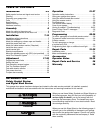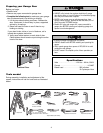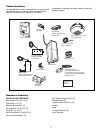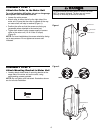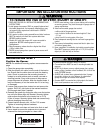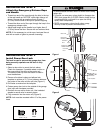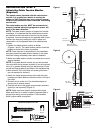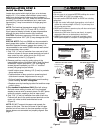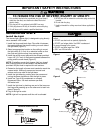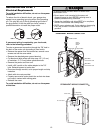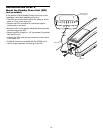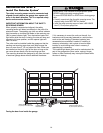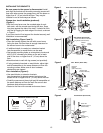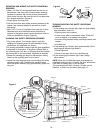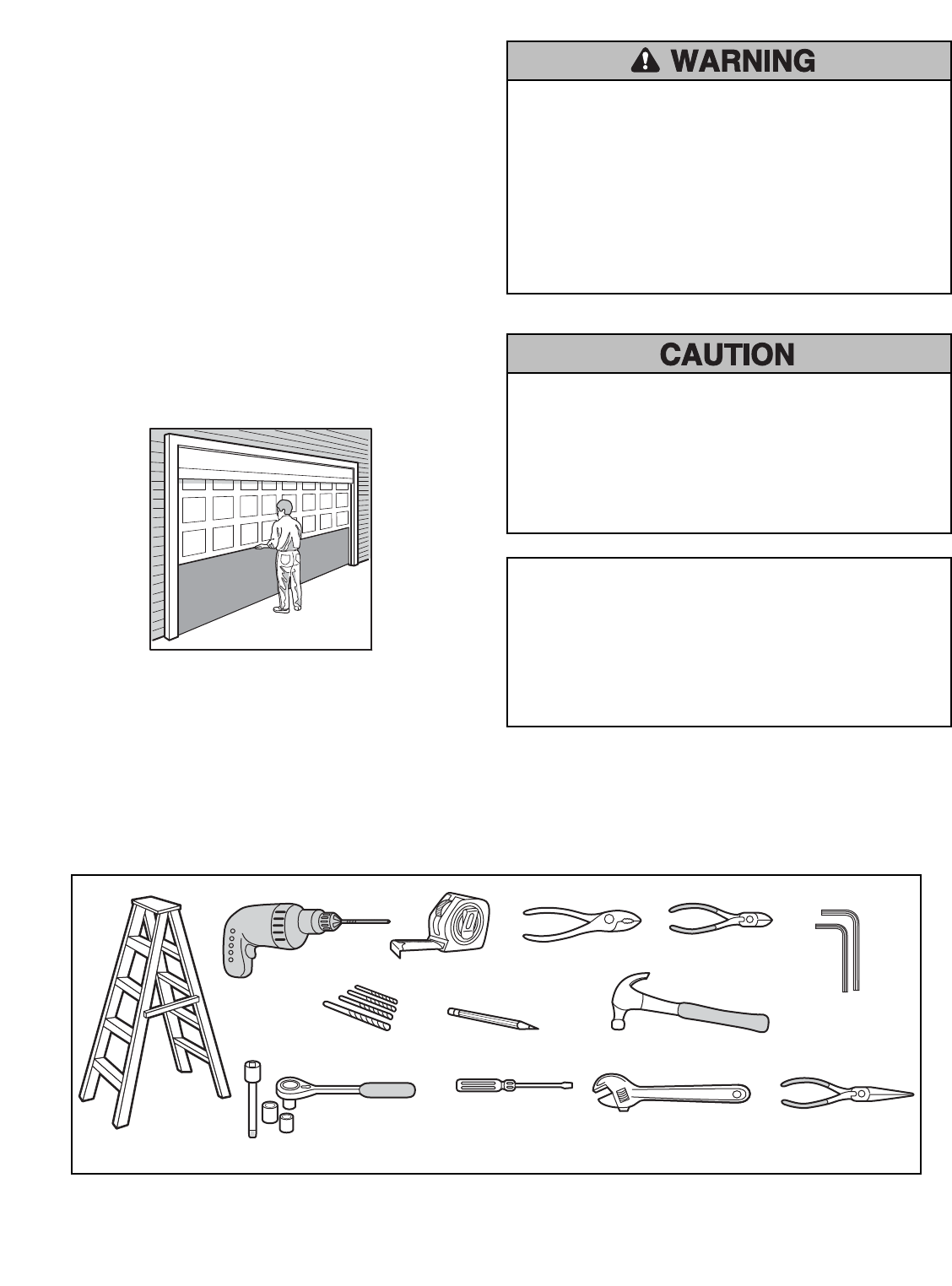
4
Preparing your Garage Door
Before you begin:
• Disable locks.
• Remove any ropes connected to garage door.
• Complete the following test to make sure your garage
door is balanced and is not sticking or binding:
1. Lift the door about halfway as shown. Release the
door. If balanced, it should stay in place, supported
entirely by its springs.
2. Raise and lower the door to see if there is any
binding or sticking.
If your door binds, sticks or is out of balance, call a
trained door systems technician.
3. Verify equal cable tension on each side of door.
Cable tension should remain equal during the entire
travel of the door.
To prevent damage to garage door and opener:
• ALWAYS disable locks BEFORE installing and operating the
opener.
• ONLY operate garage door opener at 120V, 60 Hz to avoid
malfunction and damage.
• Do NOT exceed 10 complete cycles of door operation per
hour.
To prevent possible SERIOUS INJURY or DEATH:
• ALWAYS call a trained door systems technician if garage
door binds, sticks or is out of balance. An unbalanced garage
door may not reverse when required.
• NEVER try to loosen, move or adjust garage door, door
springs, cables, pulleys, brackets or their hardware, ALL of
which are under EXTREME tension.
• Disable ALL locks and remove ALL ropes connected to
garage door BEFORE installing and operating garage door
opener to avoid entanglement.
Tools needed
During assembly, installation and adjustment of the
opener, instructions will call for hand tools as illustrated
below.
Pliers
Wire Cutters
Claw Hammer
Screwdriver
Adjustable End Wrench
1/4", 5/16" & 3/8" Sockets
and Wrench with 6" Extension
Drill
Tape Measure
2
1
Stepladder
Pencil
3/16" and 1/8"
Hex Key Wrench
Needle Nose Pliers
5/32", 3/16", 5/16"
and 3/4" Drill Bits
Sectional Door
Torque Meter (not shown)
Specifications
Volts . . . . . . . . . . . . . . . . . . .120 Vac - 60 Hz, ONLY
Current . . . . . . . . . . . . . . . . . . . . . . . . . . . . .1.0 AMP
Rated Load . . . . . . . . . . . . . . . . .325 in.lb/sec
10 Cycles per Hour




